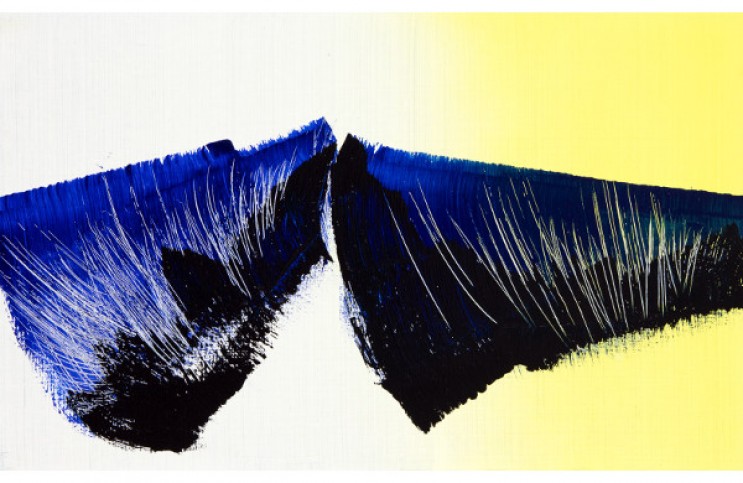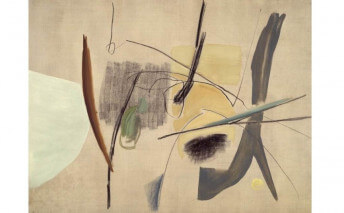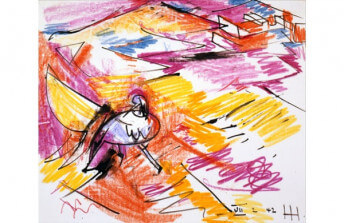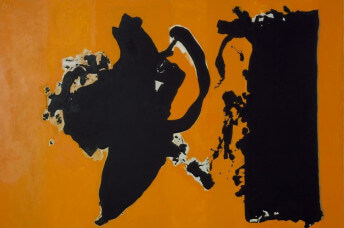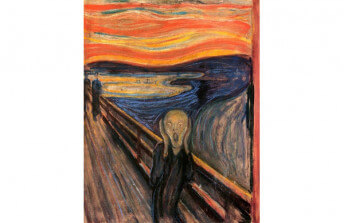Hans Hartung's Triumphant Return to Paris, Courtesy MAM
Sep 4, 2019
On 11 October 2019, the Musée d’Art Moderne de Paris (MAM) will re-open, following a year-long renovation, with Hans Hartung: La fabrique du geste, a large-scale retrospective tracing the entire career of the German-French artist Hans Hartung (1904 – 1989). Featuring around 300 works, this will be the first major Hartung retrospective to visit France since 1969. Hartung is a fascinating choice with which to inaugurate the new MAM. His stock has slowly but steadily been rising in recent years, thanks in part to a series of smaller recent gallery surveys, such as Hans HARTUNG: A constant storm—Works from 1922 to 1989, mounted in 2018 by PERROTIN New York. One especially compelling reason for the late uptick in interest in Hartung could be a growing awareness not only of how influential he was to his own contemporaries, but also of how much influence his work has had on so many abstract artists currently shaping the global aesthetic conversation. His techniques are evident in the work of influential painters such as Sterling Ruby and Christopher Wool, while his methods and compositional strategies are visible in everything from the conceptual works of Michael Joo, to the light sculptures of Ann Veronica Janssens, to the paintings of Wade Guyton, to the three-dimensional space pictures of Jessica Stockholder. What allowed Hartung to leave behind such a diverse aesthetic heritage? More than anything else, perhaps, it was the spirit of experimentation—something fundamental to his oeuvre to continues to drive abstraction today. It is a hopeful statement that MAM has chosen to celebrate its own re-invention by mounting Hans Hartung: La fabrique du geste. If the exhibition succeeds in its mission, contemporary audiences may finally begin to recognize the contribution of this relatively lesser-known 20th Century master.
The Essence of Gesture
Hartung was born in Leipzig, Germany, in 1904. After studying art history at Leipzig University, he enrolled at the Dresden Fine Arts academy, where he learned to copy the works of the Old Masters. After a visit to Paris, Hartung became more interested in abstract qualities such as color, form, and gesture, and also took a special interest in the power of the Golden Ratio. Such formal curiosities placed him on the vanguard of his generation, yet they also caused him to be labeled a “Degenerate Artist” by the Nazis—a condition that caused Hartung to leave Germany for good in 1935. During World War II, Hartung fought against his former homeland with the French Foreign Legion. He lost a leg in battle, and after the war, his injury had a profound affect on his painting practice—but not in the way one might expect. Though it limited his mobility, that only caused Hartung to experiment with new methods and mediums. Soon, physicality became the most important aspect of his work—as is suggested by the title of his upcoming retrospective, which translates into the fabric of gesture.
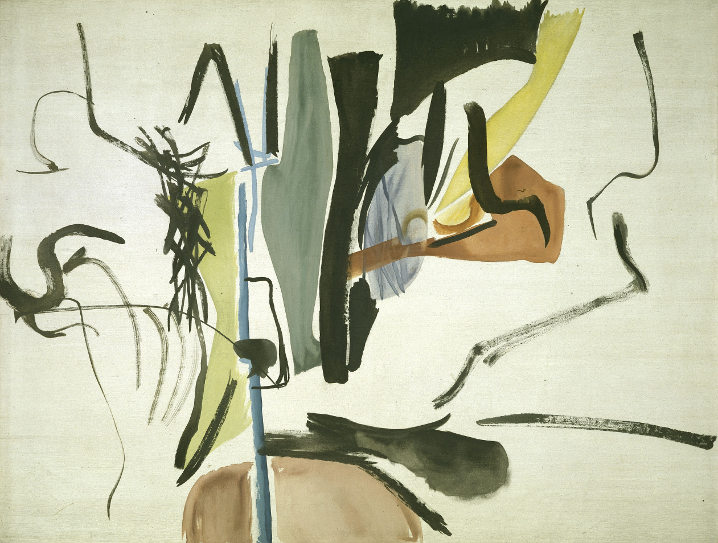
Hans Hartung - Sans titre, 1935. Aquarelle sur papier. 47 x 61.3 cm. Fondation Hartung-Bergman, Antibes. © ADAGP, Paris, 2019. Photo: Fondation Hartung-Bergman
Put simply, a gesture is a communicative movement: an amalgam of emotion and intent expressed by immediate physical action. Gestures are essential to human conversation, although the meaning of a gesture is in constant flux, changing according to local customs and the times. Visually, Hartung realized that gestural markings carry the same broad range of possible meanings, allowing viewers to interpret them in many different ways. Each gesture he made—whether with a brush, a stick of graphite, a spray gun, or any other tool—translated both as something physical and immediate—a sign of energy—and as a visual record of his internal battle between chaos and control. In the 1947 documentary Visite à Hans Hartung, by Alain Resnais, we can even see this battle playing out while Hartung is at work on a painting in his studio. Each planned movement of his body meets resistance from his tools, the surface, the space, the medium, and his own physical limitations. Planning gives way to accidents, which lead him to instantaneous revisions, new plans, and more accidents. Gradually, one gesture leads to another and then another, until the physical becomes visual, and eventually perhaps even metaphysical.
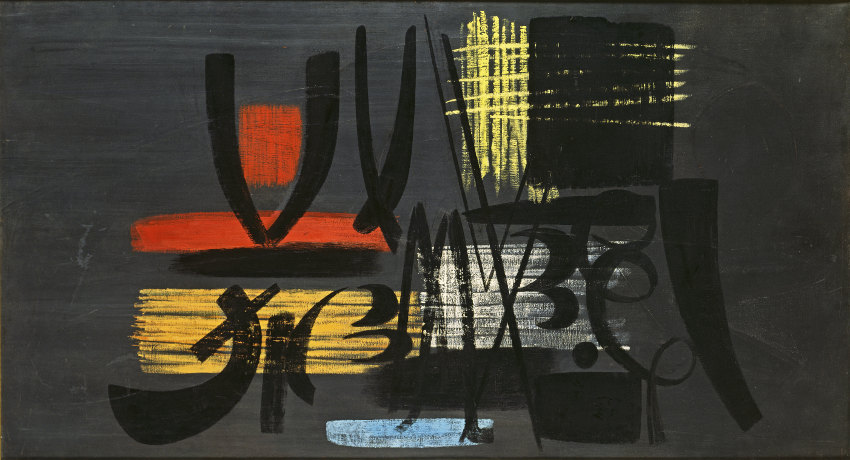
Hans Hartung - T1949-9, 1949. Huile sur toile. 89 x 162 cm. Kunstsammlung Nordrhein-Westfalen, Düsseldorf. © ADAGP, Paris, 2019. Photo © BPK, Berlin, Dist. RMN-Grand Palais / Walter Klein
Beauty and Balance
In the four decades following the war, Hartung continually re-imagined what his work could be. He explored other mediums: most prominently photography, but also printmaking and ceramics. He also took pleasure in designing the physical spaces where he lived and worked. His final home and studio, which he shared with his wife, the exceptional abstract artist Anna Eva Bergman, was located in a stark, white, Modernist compound that the couple constructed on a former olive grove in Antibes, in the South of France. Currently, that building is the home of The Hartung-Bergman Foundation, a substantial contributor to the upcoming MAM show. A visit there should be on the bucket list of any true fan of Hartung or Bergman, as its aesthetic character is a remarkable statement of the principals that guided both of these artists.
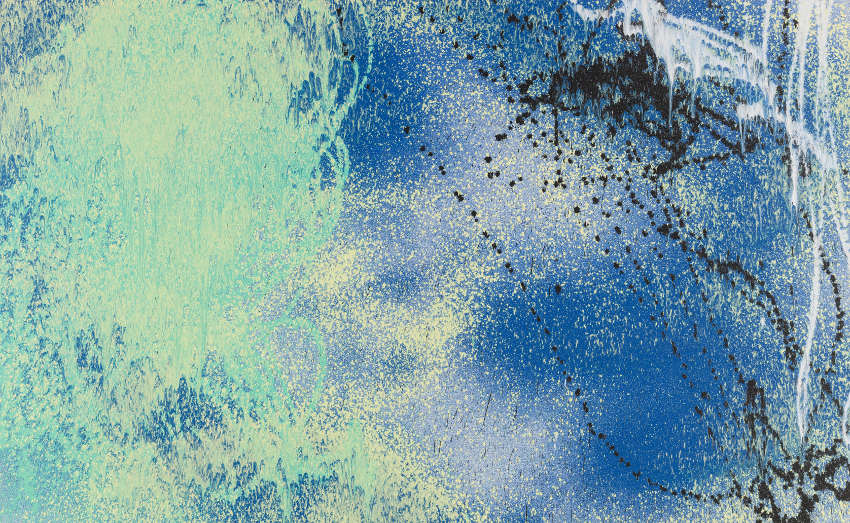
Hans Hartung - T1989- K35, 1989. Acrylique sur toile. 100 x 162 cm. © Musée d’Art moderne de Paris / Roger-Viollet. © ADAGP, Paris, 2019. Photo: Julien Vidal / Parisienne de Photographie
According to the foundation guide, the couple did not hang any paintings in their living quarters on the upper floor—neither their own paintings nor those they collected by other artists, despite owning works by many of the most prestigious artists of the 20th Century, who were their personal friends. The living spaces were only for living, and the work spaces were only for work. Every aspect of the architecture is perfectly planned and executed, while all around the compound, nature freely expresses itself in all of its unpredictable variation. The geometric precision of Bergman is echoed in the shape of the pool deck, while the gestural lyricism of Hartung is sung by the ripples in the water. The space is a marriage of content and form, control and randomness—a remarkable constructive statement of the artistic ideals that guided Hartung in his work, and continue to make him relevant today. Hans Hartung: La fabrique du geste will be on view at MAM from 11 October 2019 through 1 March 2020.
Featured image: Hans Hartung - T1966-K40, 1966. Peinture vinylique sur toile. 38 x 61 cm. Fondation Hartung Bergman, Antibes. © ADAGP, Paris, 2019. Photo: Fondation Hartung-Bergman
By Phillip Barcio
